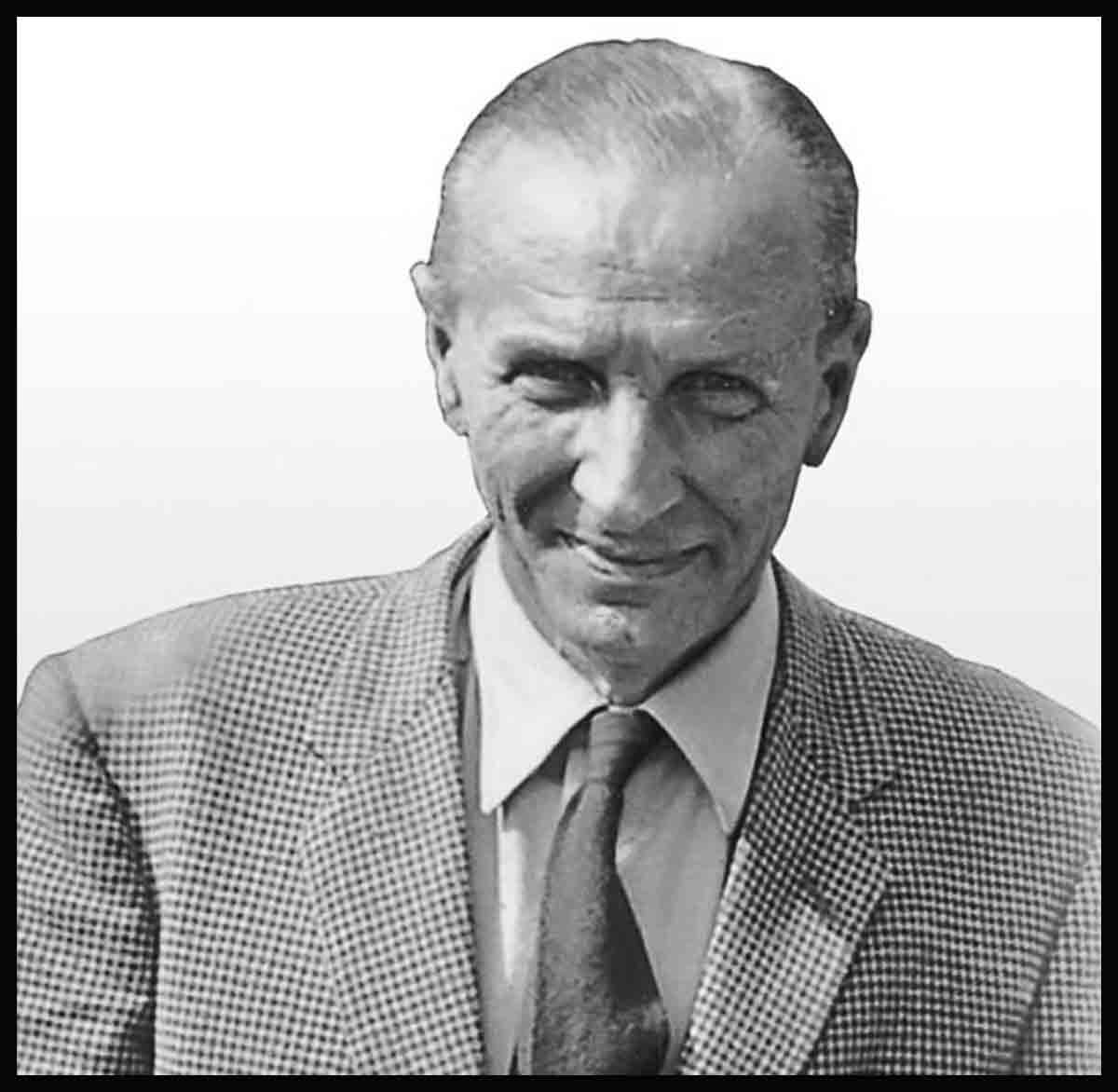
Great Designers—Sir Alec Issigonis
In Sir Alec Issigonis the world witnessed a true genius of automotive design, who single-handedly set the template for the modern small car. He was an exceptional talent with genuinely unique and radical ideas. An iconoclast and an outsider, Issigonis was also an individualist, and it is a tribute to his vision that his creations—the Morris Minor, Austin 1100, and the Mini—proved so popular.
“When you’re designing a new car for production, never, never copy the opposition.”
SIR ALEC ISSIGONIS
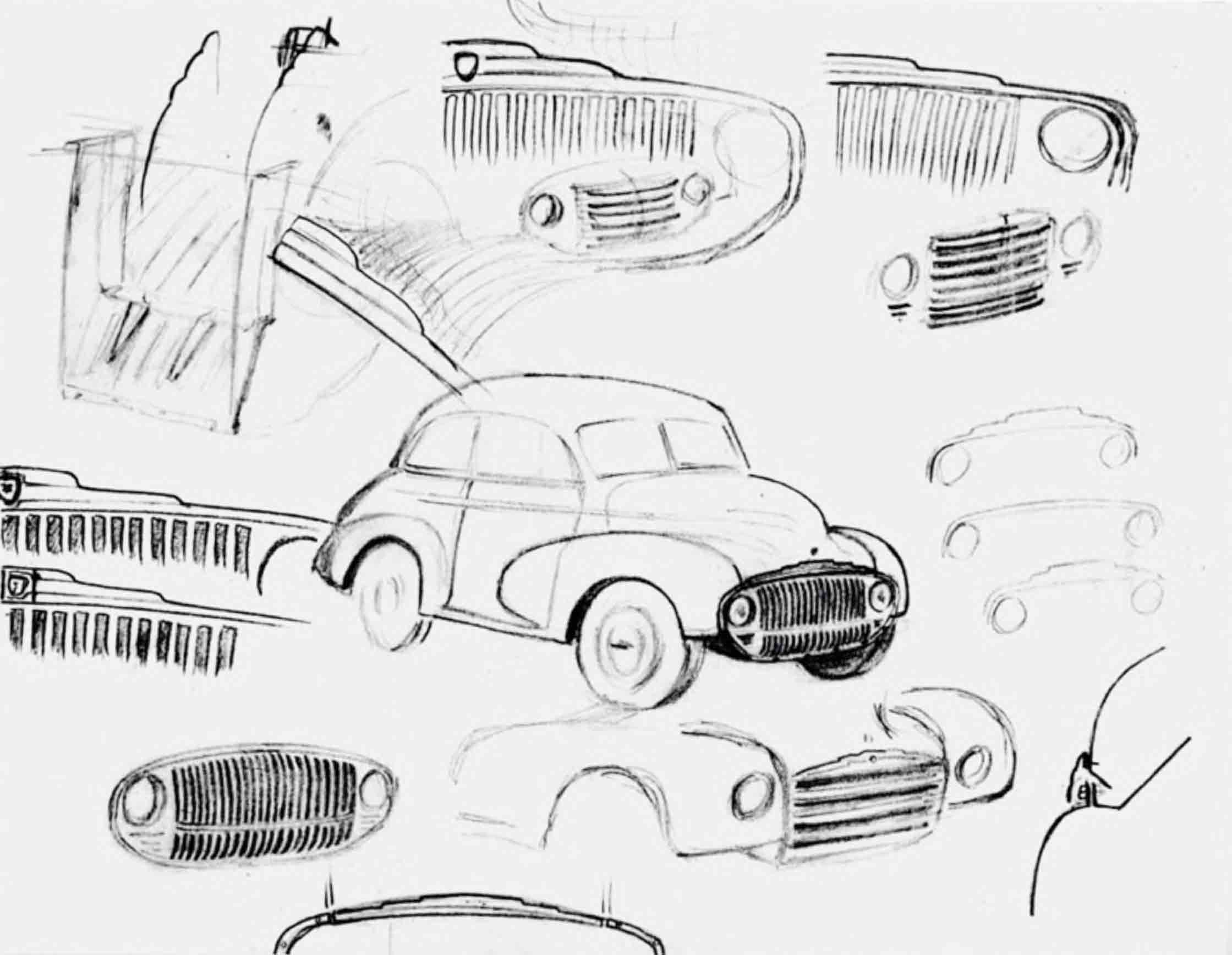
These drawings, made in 1944, show Issigonis’s radiator grille and headlamp ideas for the Mosquito, which would eventually enter production as the Morris Minor.
BORN IN SMYRNA (now Izmir), Turkey, in 1906 to a Greek father and German mother, Alec Issigonis came to the UK with his family in 1922, when he was 15. His talent for drawing was quickly recognized, and he studied engineering at Battersea Polytechnic, but failed to pass his exams.
Issigonis became a keen racing driver, piloting his modified Austin Seven racer, and joined an engineering consultancy, working on transmissions. After spells at Humber and Austin he was taken on by Morris in 1936, for whom he designed the independent front suspension of the MG YA.
The Morris Minor, which was produced from 1948 to 1971, was entirely Issigonis’s project. It pioneered Morris’s use of unitary construction and was highly space-efficient. Issigonis had wanted to use front-wheel drive; but to his disappointment, the rush to production after the war forced the company to stick with rear-wheel drive instead.
Issigonis resigned in 1952, when Morris merged with Austin to form the British Motor Corporation (BMC). He took a new position at Alvis, where he designed a V8-powered saloon that featured the world’s first hydraulic suspension with a front-to-rear interconnection. Sadly, Alvis couldn’t afford to build it, so Issigonis returned to BMC in 1955 at the invitation of Sir Leonard Lord, BMC’s chairman.
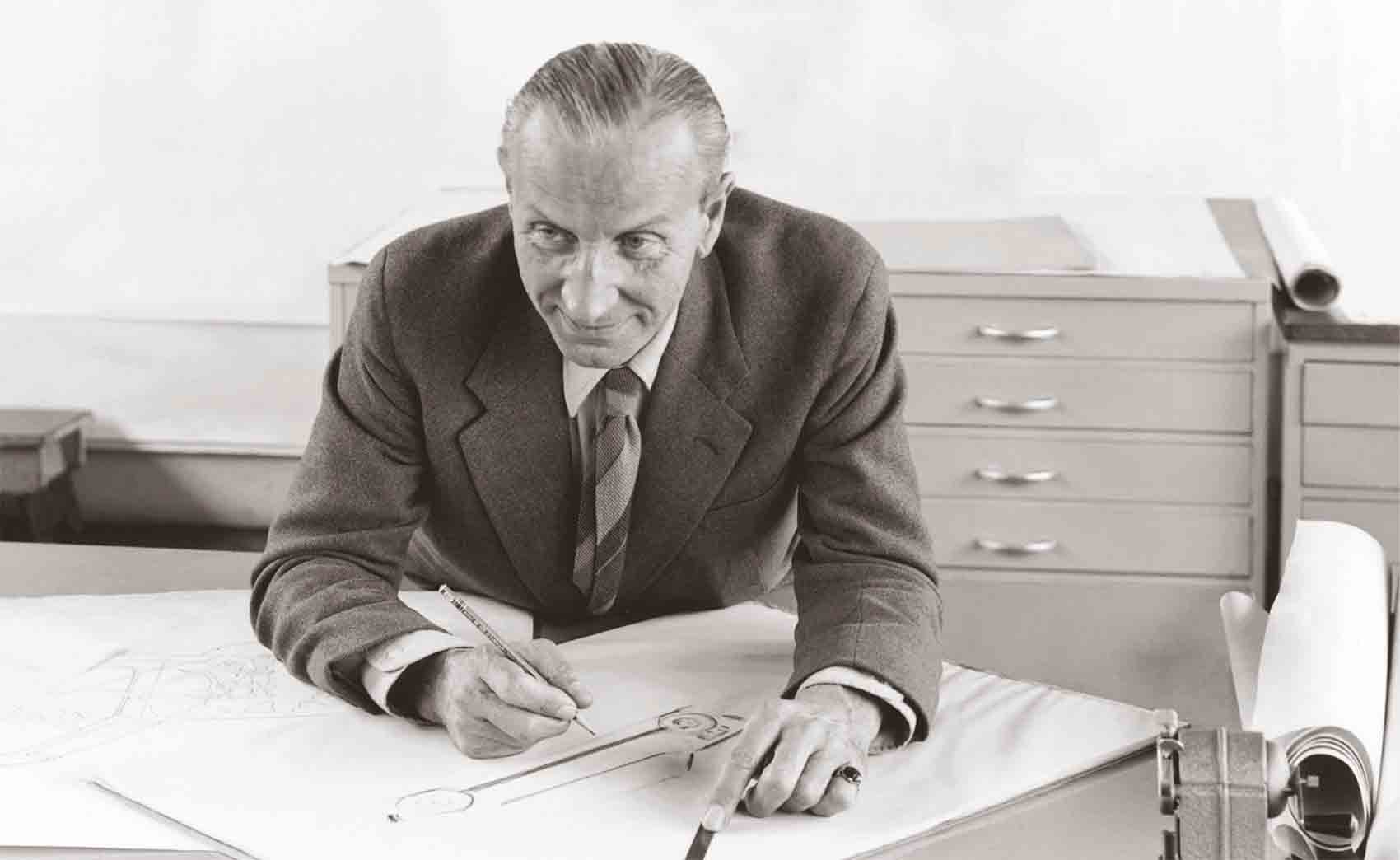
Photographed in 1959, when he was Technical Director of BMC, Alec Issigonis is shown here in his office at the Longbridge plant in Birmingham.
SUBSTANCE OVER STYLE
Alec Issigonis may have accepted the accolade “great designer”, but he would have been horrified to have heard himself called a “stylist”. The notion of “style” as propagated in America in the 1950s was the antithesis of Issigonis’s approach. He preferred to describe himself as an “ironmonger”.
Issigonis would sketch out ideas with brilliant ease, handing them to draughtsmen to turn them into technical drawings. Sometimes the sketches which bore a striking resemblance to those of Leonardo da Vinci—would be on envelopes or restaurant napkins. Issigonis’s self-belief bordered on arrogance. His dislike of “luxuries” such as radios and seatbelts meant that he simply created his cars without them. He reviled the process of designing by committee, had no time for market research, and was probably the last person able to design a mass-produced car single-handedly.
MINI MAGIC
Sir Leonard Lord gave Issigonis completely free rein when designing BMC’s new small car, the Mini. No car encapsulates the Issigonis ethic like this icon of motoring history. Compared to the stodgy dinosaurs of the time, the 1959 Mini was utterly revolutionary. The engine was mounted transversely to save space, powering the front wheels. More remarkably still, the gearbox was positioned under the engine to save space, and it shared the same lubricating oil as the engine. The wheels were tiny, too: at 10 in (25 cm) across, they freed up extra interior space.
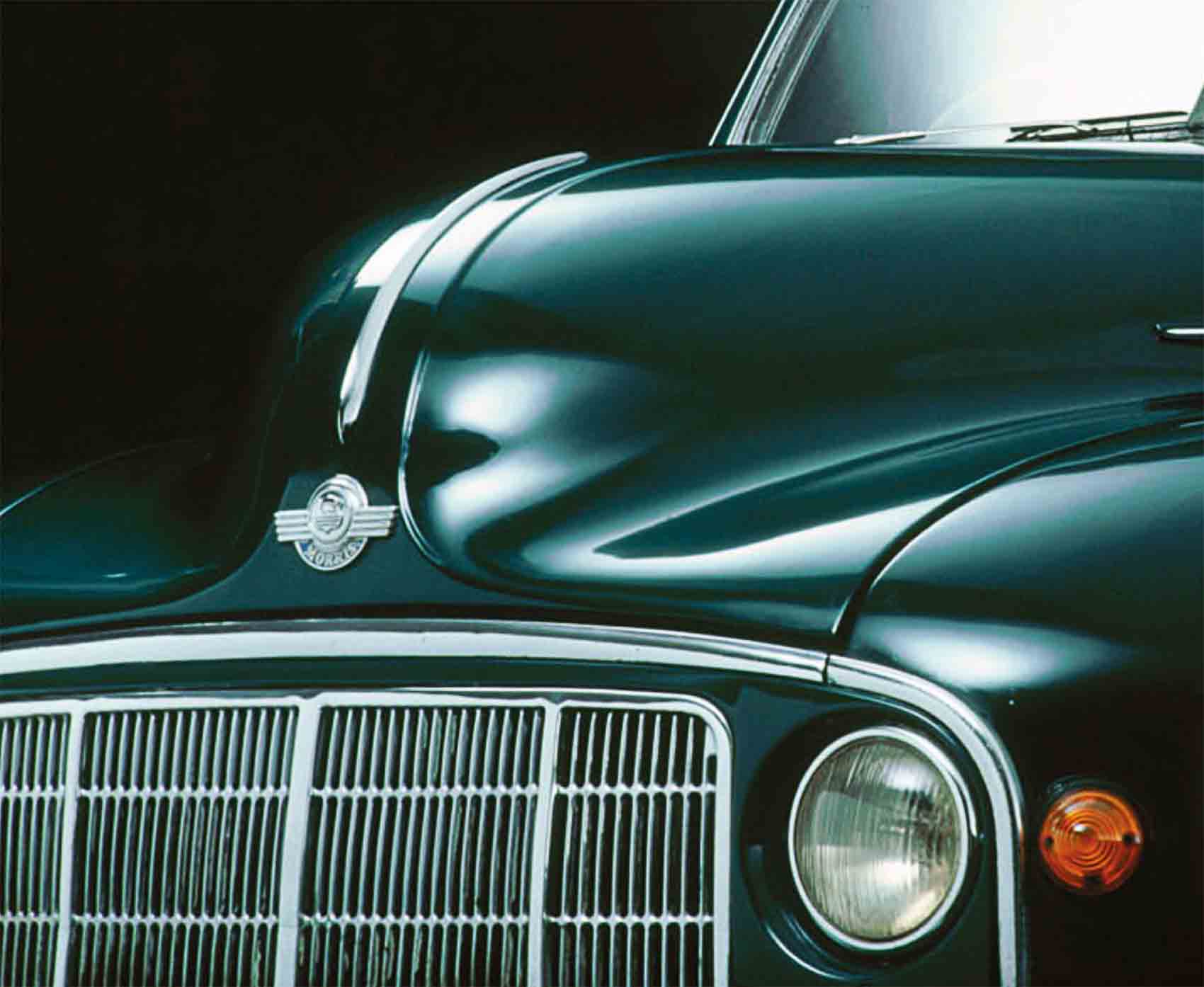
Only 10 ft (305 cm) from bumper to bumper, the Mini was a miracle of packaging, able to carry four adults and luggage in relative comfort. Issigonis calculated the smallest space needed for four passengers and became obsessed with saving space in the rest of the design wherever he could. The Mini was the cheapest car on sale at launch, yet it was quicker and more agile than many of the so-called sports cars of the day. All other car-makers eventually adopted the Mini’s packaging and front-drive layout for their own small cars. As for “styling”, the Mini was never styled as such: form merely followed function.
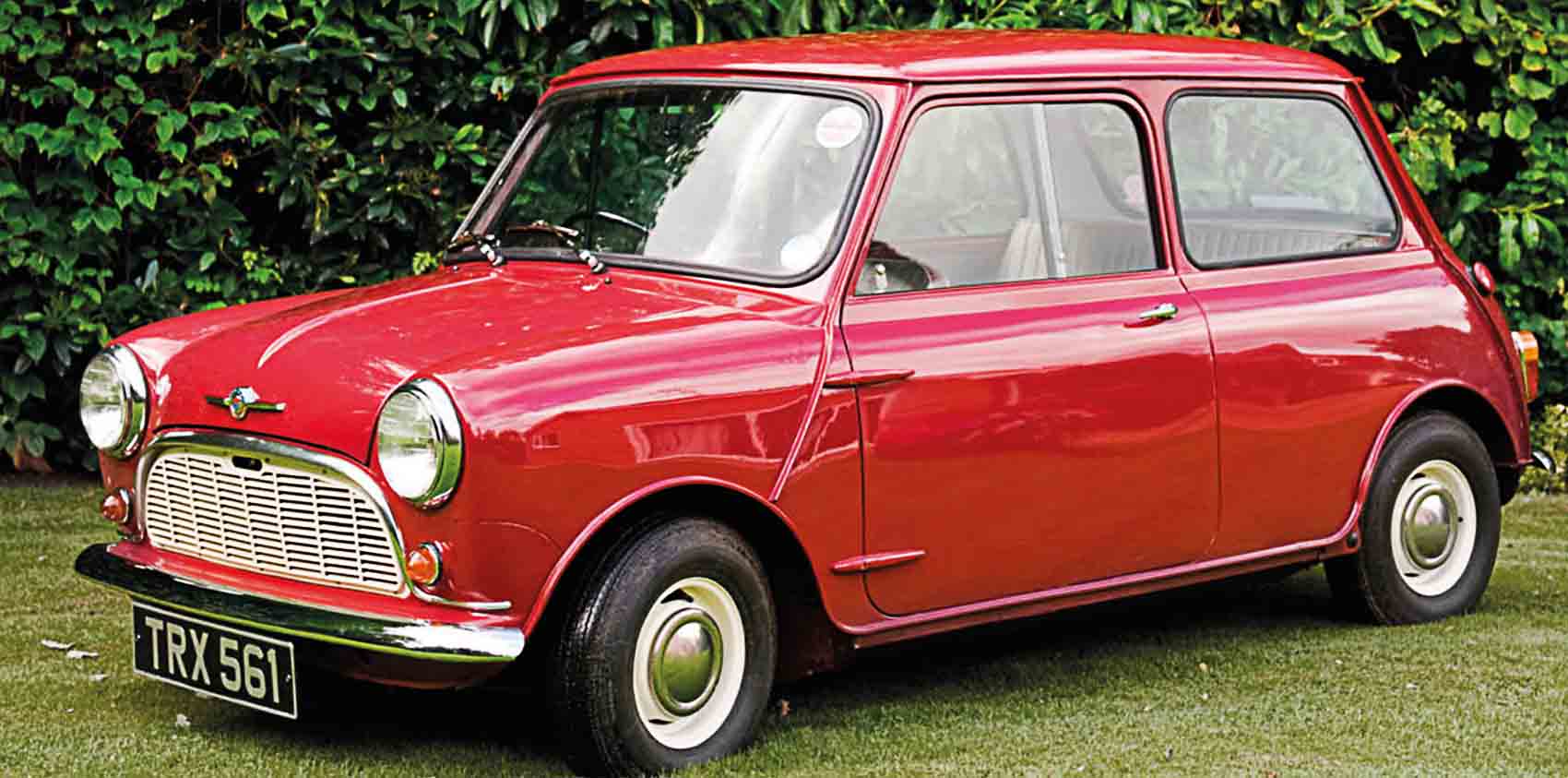
In parallel with the Mini, Issigonis worked on BMC’s Austin/Morris 1100, which became Britain’s bestselling car for much of the 1960s. However, the same front-wheel drive format faltered when applied to the larger Austin/Morris 1800.
Issigonis’s single-minded and non-collaborative approach meant that he was gradually sidelined at BMC, and he retired in 1971. He remained a consultant to what became British Leyland almost until his death in 1988.
Career highlights
> 1936 Issigonis joins Morris, working on suspension systems. World War II prevents his suspension for the Morris 10 from going into production. It is later used on the MG YA of 1949
> 1948 The first all-lssigonis design, the Morris Minor, is an instant bestseller
> 1959 The Mini—Issigonis’s masterpiece, and quite possibly the world’s most significant car—stuns the public on its debut. It sets the design pattern for the modern small car
> 1962 Another front-wheel drive masterpiece, the Austin/Morris 1100, is launched to huge acclaim
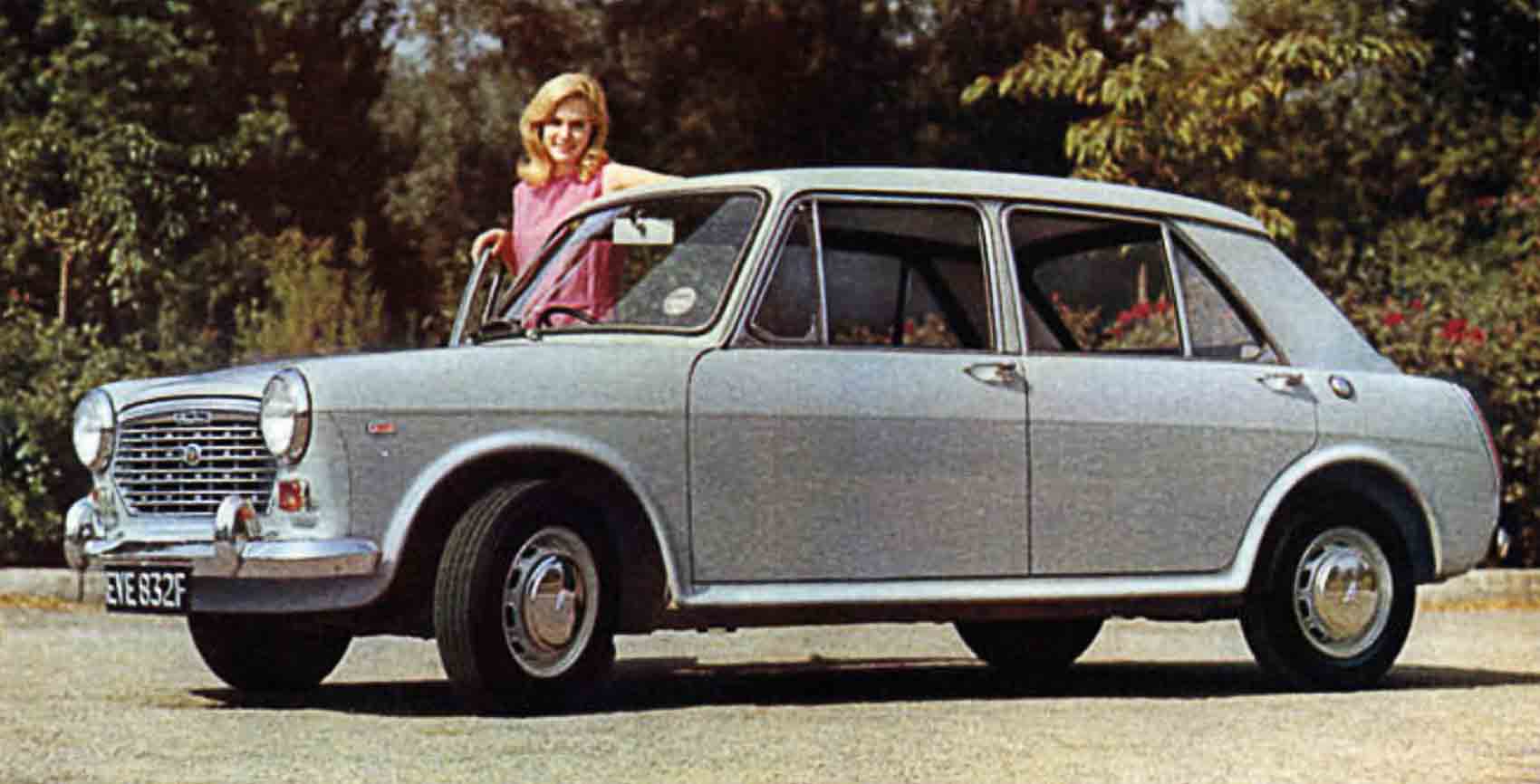
With a surprisingly large interior considering its size, the 1100 was launched by BMC in 1962 as a four-door family saloon. It featured front disc brakes, front-wheel drive, and novel Hydrolastic fluid suspension.
> 1967 The Royal Society makes Issigonis a fellow, and he is knighted two years later by Queen Elizabeth II
> 1969 Issigonis is appointed Special Developments Director at British Leyland
> 1971 After retiring Issigonis remains active, producing designs for experimental gearless transmissions and steam-powered cars
It is a quote. The Classic Car Book – The Definitive Visual History 2016




